Idea by
Rennie Tang
Call for ideas 2020
Urban Fabric(ations)
Urban Fabric(ations)

- New alliances
The impact of this project lies in its ability to unleash architecture from its conventional modes of creation, rejecting the notion of ‘best practices’ and making way for ‘actions of possibility.’ Urban Fabric(ations) begins with the words FABRIC, FABRICATION and FABRICATE as agents of such possibility. The subtle differences and relationships between these words arising from their shared root word, prompt us to consider uncharted spatial realms. Urban FABRIC refers to the interweaving of conditions - physical, cultural, historical, environmental, economic, political - while FABRICATION suggests something that is made-up or imagined; whereas the verb to FABRICATE refers to a material process involving the crafting of artifacts. Urban Fabric(ations) began through a landscape architecture seminar that I taught in Italy and currently continues in Paris involving a team researchers working across the fields of architecture, urbanism, landscape, and choreographic practice.
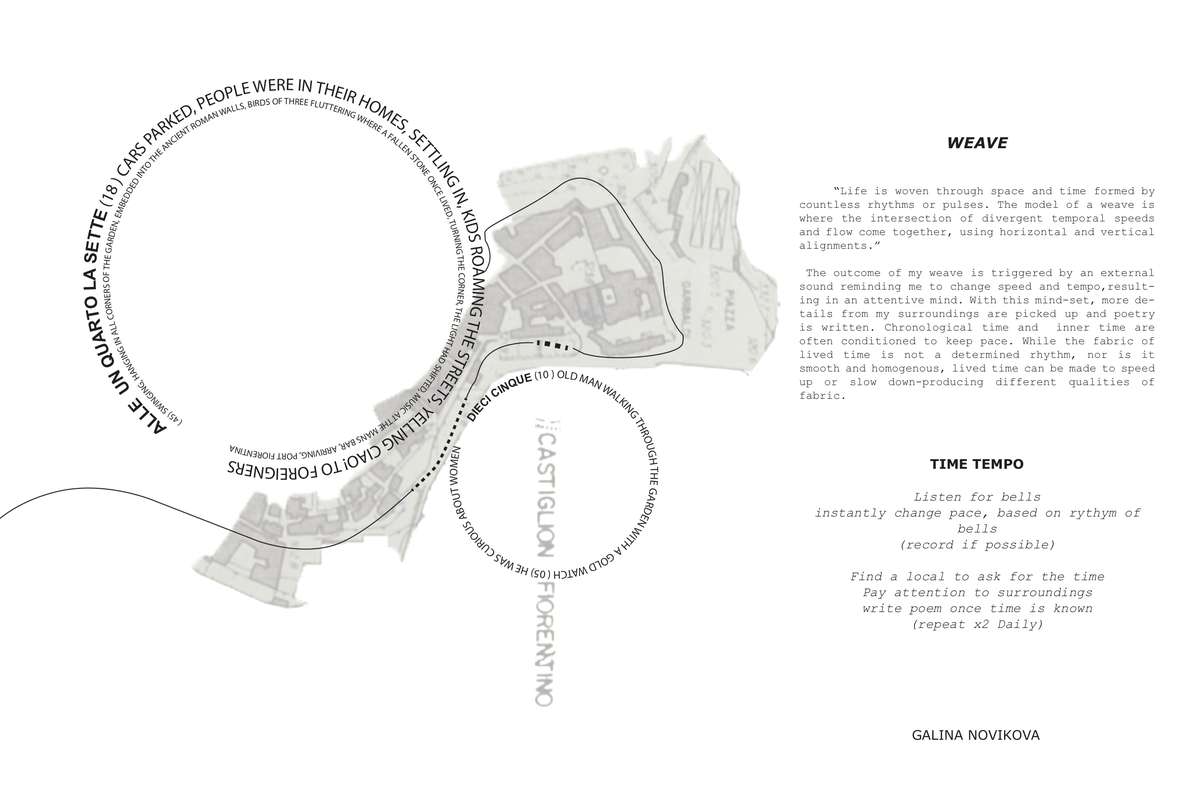
Perceptive Mapping (2017) of my student Galina Novikova’s walk through the Tuscan town Castilione Fiorentino produced by a ‘walking algorithm’ based on excerpt from Emma Cocker’s book ‘The Yes of the No.’
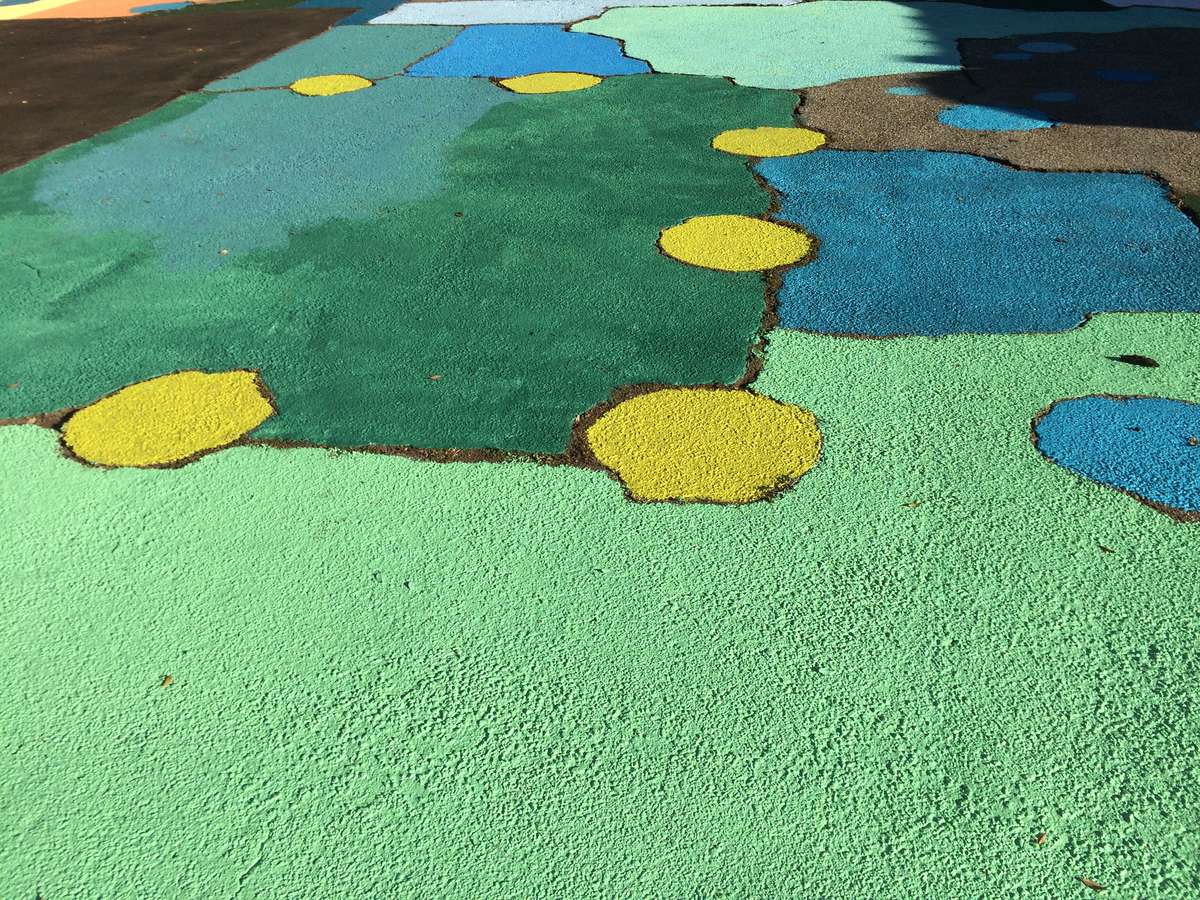
Richland Ave Elementary Paint Mapping Project (2018), Los Angeles, California. Using leftover paint and the linework of asphalt cracks, I worked with a group of parents and children to transform the schoolyard into a playful and stormwater friendly surface.

Performing Navigations: (Re)Mapping the Museum (2013) is a work commissioned by the Hammer Museum in Los Angeles. Led in collaboration with artist/choreographer Sara Wookey, we invited participants to navigate and map the museum’s public spaces, revealing their hidden qualities and provoking the imagination of their potential.
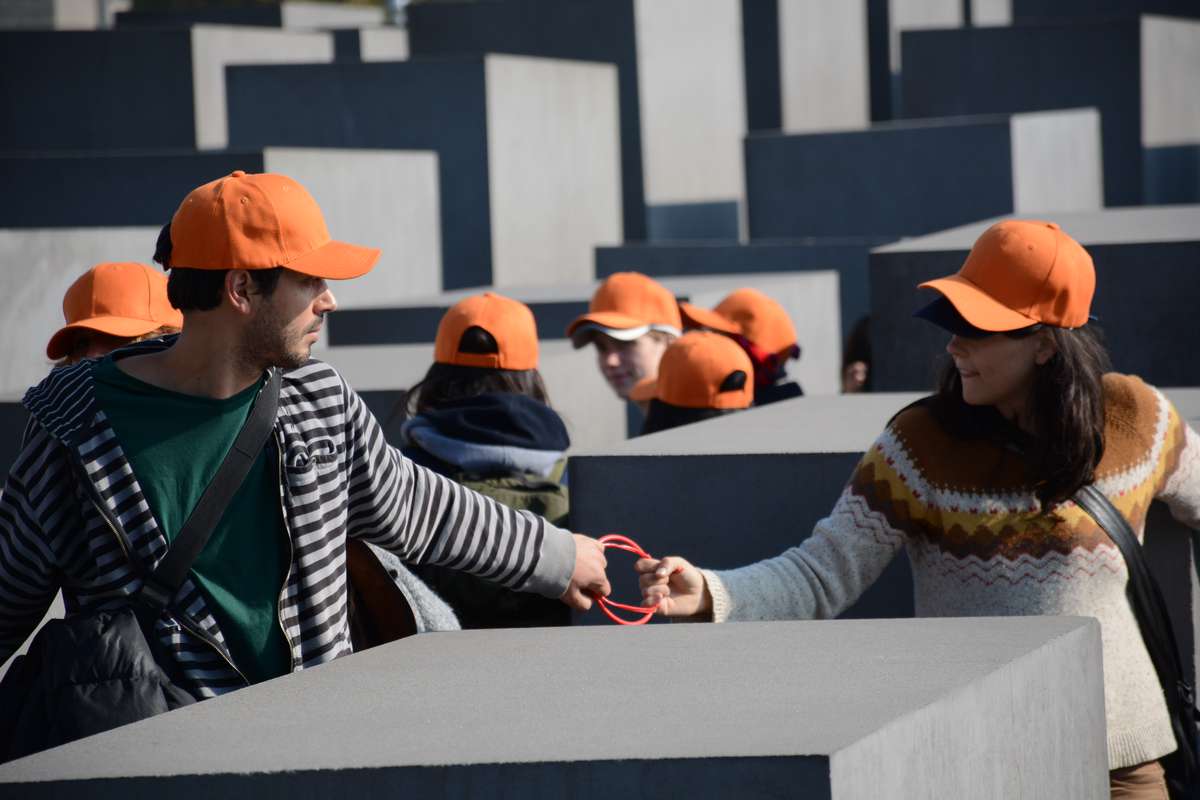
Residual City (2014), Berlin, Germany. Defined by architectural fragments, urban voids and unresolved spatial logics the residual spaces of Berlin create a complex urban fabric that profoundly affects how the human body moves through the city. I led a performative walking tour exploring how a collective of bodies can navigate this transitory landscape.
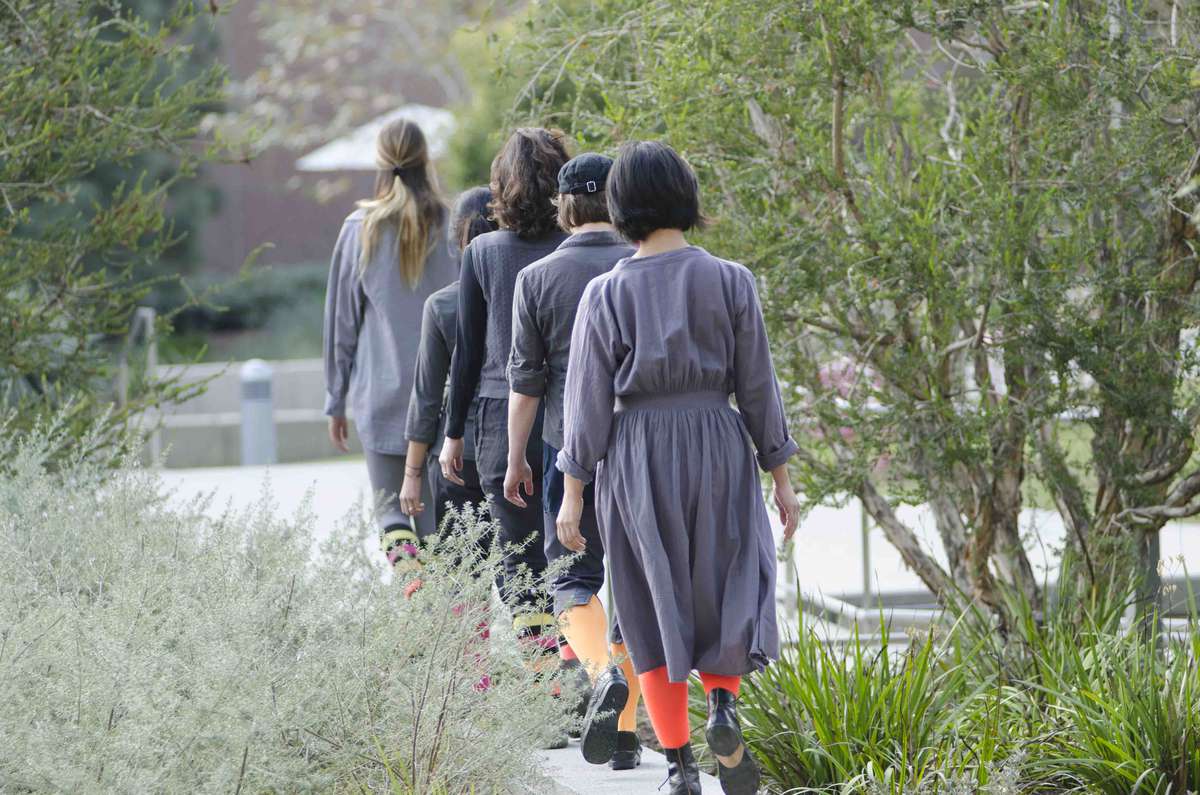
ActionScape (2013) is a performance that illuminates every day human action as an integral component of the landscape. It is a participatory performance piece led in collaboration with choreographer Sara Wookey accompanied by five performers. Part of November dance Series Grand Park Got Moves
Performers: Olivia Booth, Katya Kahn, Korina Kinnear
Photography/Video: Barry Lehrman
Urban Fabric(ations)
Urban Fabric(ations)

- New alliances
The impact of this project lies in its ability to unleash architecture from its conventional modes of creation, rejecting the notion of ‘best practices’ and making way for ‘actions of possibility.’ Urban Fabric(ations) begins with the words FABRIC, FABRICATION and FABRICATE as agents of such possibility. The subtle differences and relationships between these words arising from their shared root word, prompt us to consider uncharted spatial realms. Urban FABRIC refers to the interweaving of conditions - physical, cultural, historical, environmental, economic, political - while FABRICATION suggests something that is made-up or imagined; whereas the verb to FABRICATE refers to a material process involving the crafting of artifacts. Urban Fabric(ations) began through a landscape architecture seminar that I taught in Italy and currently continues in Paris involving a team researchers working across the fields of architecture, urbanism, landscape, and choreographic practice.

Perceptive Mapping (2017) of my student Galina Novikova’s walk through the Tuscan town Castilione Fiorentino produced by a ‘walking algorithm’ based on excerpt from Emma Cocker’s book ‘The Yes of the No.’

Richland Ave Elementary Paint Mapping Project (2018), Los Angeles, California. Using leftover paint and the linework of asphalt cracks, I worked with a group of parents and children to transform the schoolyard into a playful and stormwater friendly surface.
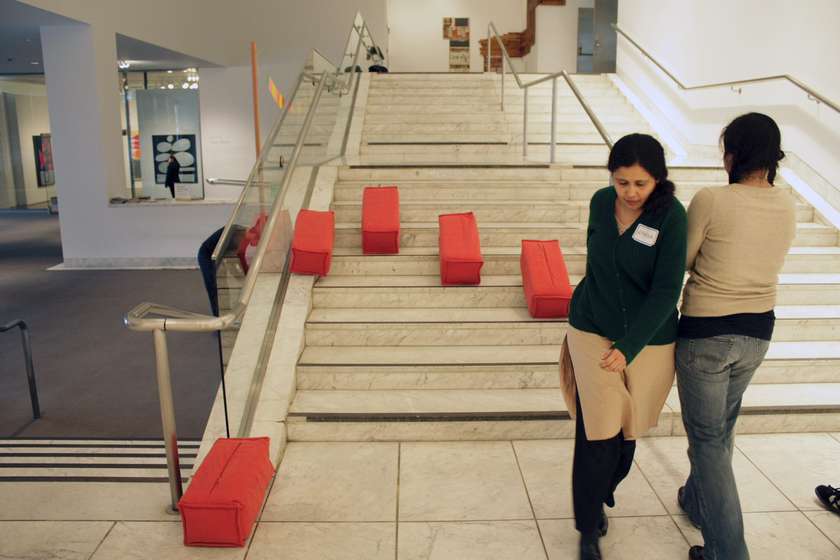
Performing Navigations: (Re)Mapping the Museum (2013) is a work commissioned by the Hammer Museum in Los Angeles. Led in collaboration with artist/choreographer Sara Wookey, we invited participants to navigate and map the museum’s public spaces, revealing their hidden qualities and provoking the imagination of their potential.
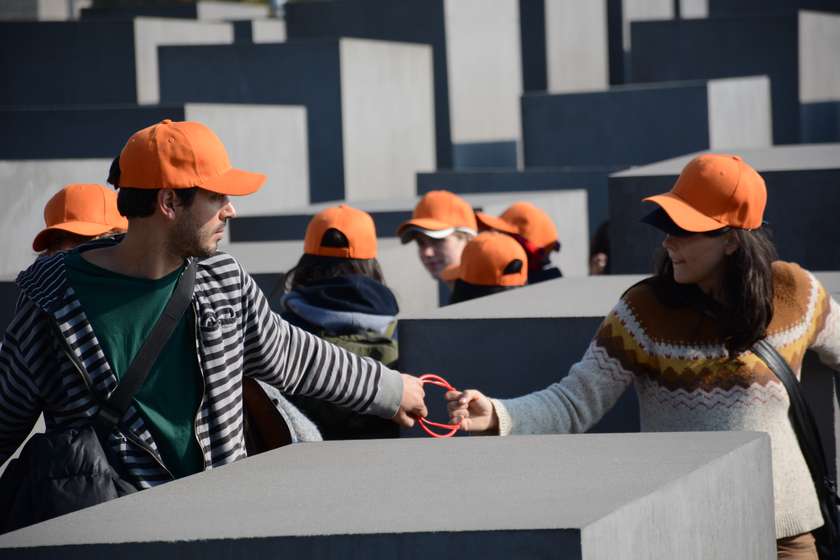
Residual City (2014), Berlin, Germany. Defined by architectural fragments, urban voids and unresolved spatial logics the residual spaces of Berlin create a complex urban fabric that profoundly affects how the human body moves through the city. I led a performative walking tour exploring how a collective of bodies can navigate this transitory landscape.
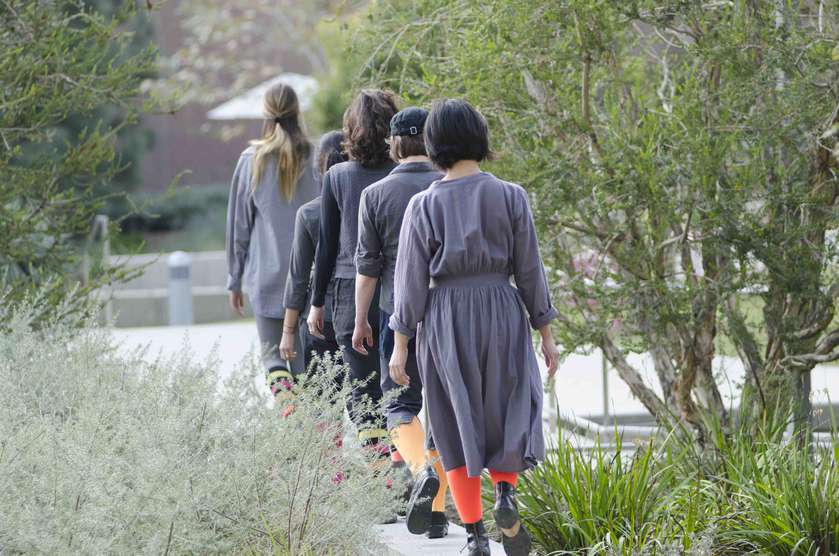
ActionScape (2013) is a performance that illuminates every day human action as an integral component of the landscape. It is a participatory performance piece led in collaboration with choreographer Sara Wookey accompanied by five performers. Part of November dance Series Grand Park Got Moves
Performers: Olivia Booth, Katya Kahn, Korina Kinnear
Photography/Video: Barry Lehrman